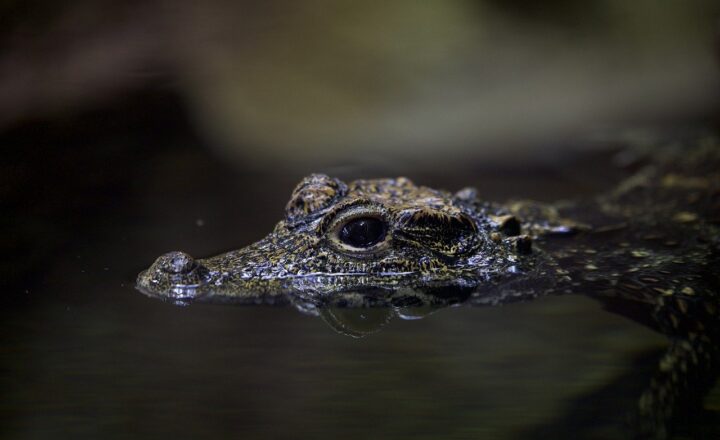The World’s Most Mysterious Plants and Why They Defy Scientific Explanation
November 12, 2024

Plants are often viewed as straightforward organisms, thriving under sunlight and soil. However, some species have baffled scientists, defying traditional explanations and sparking curiosity and intrigue. From carnivorous plants to those with seemingly magical attributes, this article dives deep into some of the world’s most mysterious plants and explores the questions they provoke.
1. Introduction: The Wonders of Plant Life
The vast diversity of plant life on Earth is nothing short of astonishing. While many plants follow predictable life cycles, certain species exhibit strange behaviors that challenge our understanding of biology and ecology. These anomalies raise pressing questions: How did they evolve? What role do they play within their ecosystems? Let’s journey through the world of mysterious plants that have captured our imaginations and baffled scientists across generations.
2. The Dubious Delicacies: Carnivorous Plants
One of the most fascinating categories of mysterious plants is carnivorous plants. These species have adapted to thrive in nutrient-poor environments by capturing and digesting animals, primarily insects.
– Venus Flytrap (Dionaea muscipula): Perhaps the most iconic carnivorous plant, the Venus Flytrap snaps shut when triggered by unsuspecting insects. This swift movement raises questions about how such sensitivity evolved. The plant not only extracts nutrients from its prey but also exhibits a level of complex movement rarely found in plants.
– Pitcher Plants (Sarracenia): These tubular plants lure insects with bright colors and enticing scents. Once inside, the smooth walls prevent escape, leading to a slow demise. Pitcher plants showcase unique adaptations, such as the production of enzymes to digest their prey.
Despite extensive research, the evolution of their trapping mechanisms and the energy efficiencies involved remain enigmas in botanical science.
3. The Elusive Rafflesia: The World’s Largest Flower
Rafflesia arnoldii is remarkable for producing the largest flower in the world, reaching up to three feet in diameter. However, it’s notorious for its unpleasant odor, often described as resembling decaying flesh. This odor is critical for attracting pollinators, mainly carrion flies.
– Unique Biology: Rafflesia is a parasitic plant, relying on host vines for nutrients and survival. Its life cycle is shrouded in mystery; it takes years to develop, blooming for only a few days. The plant’s complete dependence on its host makes it a fascinating study of parasitism and evolution.
The existence of Rafflesia raises significant questions about plant adaptation and survival in even the most inhospitable environments.
4. The Sensitive Plant: Mimosa pudica
Mimosa pudica, commonly known as the sensitive plant, is famous for its rapid response to touch. Upon contact, the leaves fold and droop, a phenomenon called thigmonasty.
– Mysteries of Defense Mechanisms: While this response is thought to deter herbivores, the exact evolutionary benefits remain elusive. Some experts believe that this dramatic reaction could serve as a defense mechanism, while others theorize it may play a role in minimizing water loss during stressful times.
Despite extensive studies, the true motivation behind the plant’s behavior continues to provoke curiosity.
5. The Corpse Flower: A Botanical Wonder
The Amorphophallus titanum, or corpse flower, is another fascinating plant renowned for its distinct odor that resembles rotting flesh.
– A Blooming Mystery: This plant can take years to bloom, producing one of the largest flowering structures in the world. The strong odor it emits is specifically designed to attract pollinators drawn to decay, showcasing a perplexing relationship between plants and pollinator behavior.
The corpse flower raises vital questions about evolution and the different strategies plants employ to ensure reproduction.
6. The Singing Plant: Myrmecodia beccarii
Myrmecodia beccarii, also known as the singing plant, has arboreal roots that house ants. When disturbed, the plant emits a sound resembling a soft whistling or chirping noise.
– Communication & Defense: This unique feature raises baffling questions about the plant’s communication methods. It’s theorized that the sound may help to signal the ants, which protect the plant from herbivores, demonstrating a compelling case of mutualism between plants and insects.
This form of communication indicates complex relationships within ecosystems that we are still trying to fully understand.
7. Conclusion: The Ever-Unfolding Mysteries of Botany
The world of plants continues to mesmerize and mystify us. The fascinating adaptations and peculiarities of species such as carnivorous plants, the corpse flower, and the singing plant compel scientists and enthusiasts alike to explore deeper into the mysteries of evolution and life.
As ongoing research reveals more about these extraordinary plants, we are reminded of the stunning diversity of life forms on our planet and the complexities that still elude our understanding. The mysteries of botany beckon us to appreciate nature’s wonders and strive for continued inquiry into the natural world’s enigmas.
Whether you’re a nature enthusiast, a scientist, or simply curious, one thing is clear: the exploration of mysterious plants is far from over. Their oddities not only expand our knowledge of plant biology but also serve as a reminder of the intricate connections that bind life on Earth.








